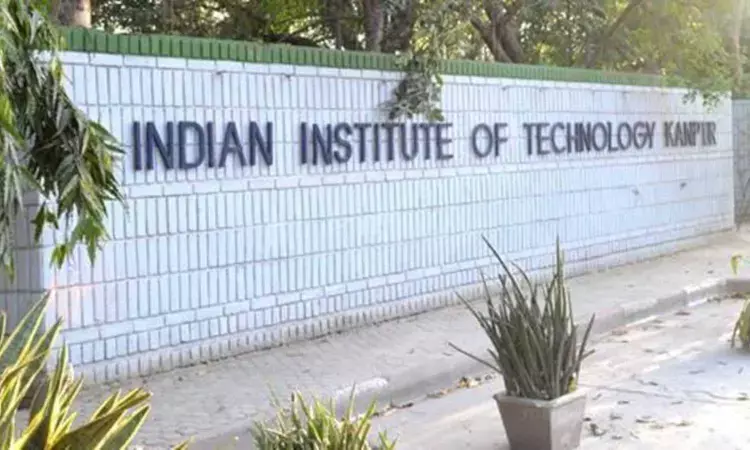- Home
- Medical news & Guidelines
- Anesthesiology
- Cardiology and CTVS
- Critical Care
- Dentistry
- Dermatology
- Diabetes and Endocrinology
- ENT
- Gastroenterology
- Medicine
- Nephrology
- Neurology
- Obstretics-Gynaecology
- Oncology
- Ophthalmology
- Orthopaedics
- Pediatrics-Neonatology
- Psychiatry
- Pulmonology
- Radiology
- Surgery
- Urology
- Laboratory Medicine
- Diet
- Nursing
- Paramedical
- Physiotherapy
- Health news
- Fact Check
- Bone Health Fact Check
- Brain Health Fact Check
- Cancer Related Fact Check
- Child Care Fact Check
- Dental and oral health fact check
- Diabetes and metabolic health fact check
- Diet and Nutrition Fact Check
- Eye and ENT Care Fact Check
- Fitness fact check
- Gut health fact check
- Heart health fact check
- Kidney health fact check
- Medical education fact check
- Men's health fact check
- Respiratory fact check
- Skin and hair care fact check
- Vaccine and Immunization fact check
- Women's health fact check
- AYUSH
- State News
- Andaman and Nicobar Islands
- Andhra Pradesh
- Arunachal Pradesh
- Assam
- Bihar
- Chandigarh
- Chattisgarh
- Dadra and Nagar Haveli
- Daman and Diu
- Delhi
- Goa
- Gujarat
- Haryana
- Himachal Pradesh
- Jammu & Kashmir
- Jharkhand
- Karnataka
- Kerala
- Ladakh
- Lakshadweep
- Madhya Pradesh
- Maharashtra
- Manipur
- Meghalaya
- Mizoram
- Nagaland
- Odisha
- Puducherry
- Punjab
- Rajasthan
- Sikkim
- Tamil Nadu
- Telangana
- Tripura
- Uttar Pradesh
- Uttrakhand
- West Bengal
- Medical Education
- Industry
IIT Kanpur researchers visualize communication of G-protein coupled receptors, paves way for new drug discovery

Kanpur: A group of researchers led by Prof. Arun K Shukla in the Department of Biological Sciences and Bioengineering at the Indian Institute of Technology Kanpur (IIT-K) has unraveled a previously unknown mechanism that regulates an important class of drug targets known as G protein-coupled receptors.
The discovery has important implications for not only understanding the fundamental mechanism of cellular signaling in our body but it also has potential to facilitate novel drug discovery for several human disease conditions. The study published in the May issue of the international journal, Molecular Cell has been conducted using a cutting-edge technology known as cryogenic-electron microscopy (cryo-EM).
The cells in our body are surrounded by a membrane that harbors a special type of protein molecules known as receptors. These receptors are important for our body to sense different chemical and hormones, and respond accordingly by activating specific physiological responses. One particular class of receptors known as G protein-coupled receptors (GPCRs), is involved in regulating heart function, blood pressure, mental disorders, and our behavior. Several drugs such as those used for depression, heart failure, cancer, and hypertension work by modulating these receptor proteins.
The function of GPCRs is regulated by another family of proteins in our body known as arrestins, which bind to GPCRs and control their function and physiological responses. However, a complete understanding of GPCR-arrestin interaction has been mostly elusive so far. The researchers have now visualized the cross-talk of GPCRs and arrestins in great detail using the cutting-edge technology, cryogenic- electron microscopy (cryo-EM). The same has allowed the team to discover a novel mechanism that is responsible for regulating the function of GPCRs in our body.
Says Prof Shukla, “This study has opened up novel directions for improving the currently existing medicines by lowering their side-effects, and also provides an opportunity for discovering new medicine for several human disease conditions. For example, the chemokine receptor that is one of the receptors investigated in this study has important roles in breast cancer progression while the complement receptors also investigated here are important targets for treating inflammatory disorders such as rheumatoid arthritis.”
The researchers are now working in the direction of novel drug discovery in collaboration with several international laboratories including studies in animal models.
This study is led by Prof. Arun K. Shukla and is co-authored by PhD students Mr. Jagannath Maharana, Ms. Parishmita Sarma and Ms. Shirsha Saha, post-doctoral fellows Dr Ramanuj Banerjee and Dr Manish Yadav, and project fellows Mr. Sayantan Saha and Mr. Vinay Singh. The study also includes Dr Mohamed Chami from the University of Basel in Switzerland as a collaborator. This study is supported by the DBT Wellcome Trust India Alliance and Science and Engineering Research Board (SERB).
Dr. Shukla is also spearheading the establishment of a National cryo-EM facility at IIT Kanpur that is supported by SERB, and expected to be functional later this year.
Journal reference:
Shukla AK, Maharana J, Sarma P, Yadav MK, Saha S, Singh V, Saha S, Chami M, Banerjee R. “ Structural snapshots uncover a key phosphorylation motif in GPCRs driving β-arrestin activation”. 2023. Molecular Cell. May: https://doi.org/10.1016/j.molcel.2023.04.025
Indian Institute of Technology KanpurIIT kanpurG protein coupled receptorsMolecular Cellcryogenic electron microscopy
Ruchika Sharma joined Medical Dialogue as an Correspondent for the Business Section in 2019. She covers all the updates in the Pharmaceutical field, Policy, Insurance, Business Healthcare, Medical News, Health News, Pharma News, Healthcare and Investment. She has completed her B.Com from Delhi University and then pursued postgraduation in M.Com. She can be contacted at editorial@medicaldialogues.in Contact no. 011-43720751
Next Story


